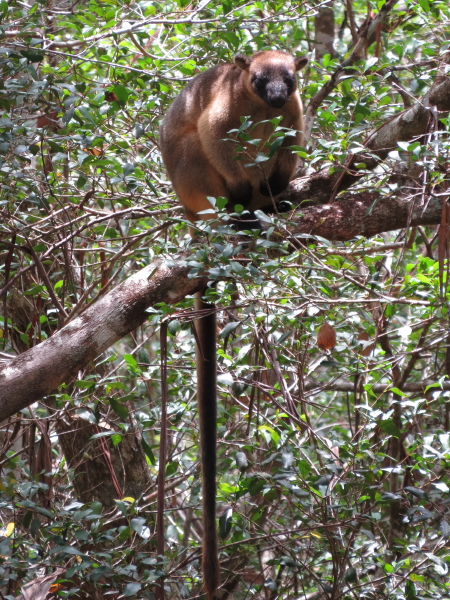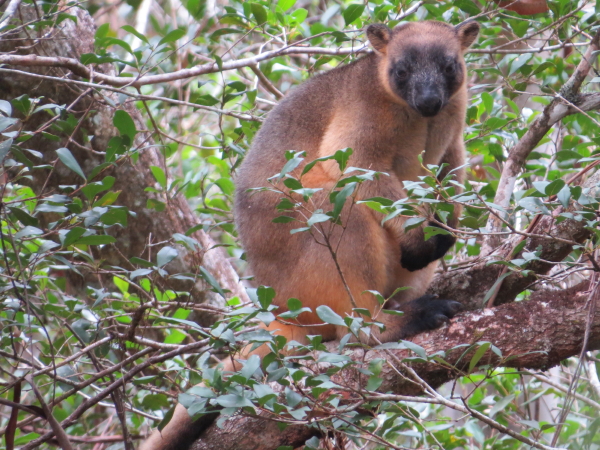
While I was watching the adult riflebird performing near the cabin, I spotted a Lumholtz’s Tree-kangaroo in the large wattle (Acacia melanoxylon) nearby.
Then it was the young male’s turn: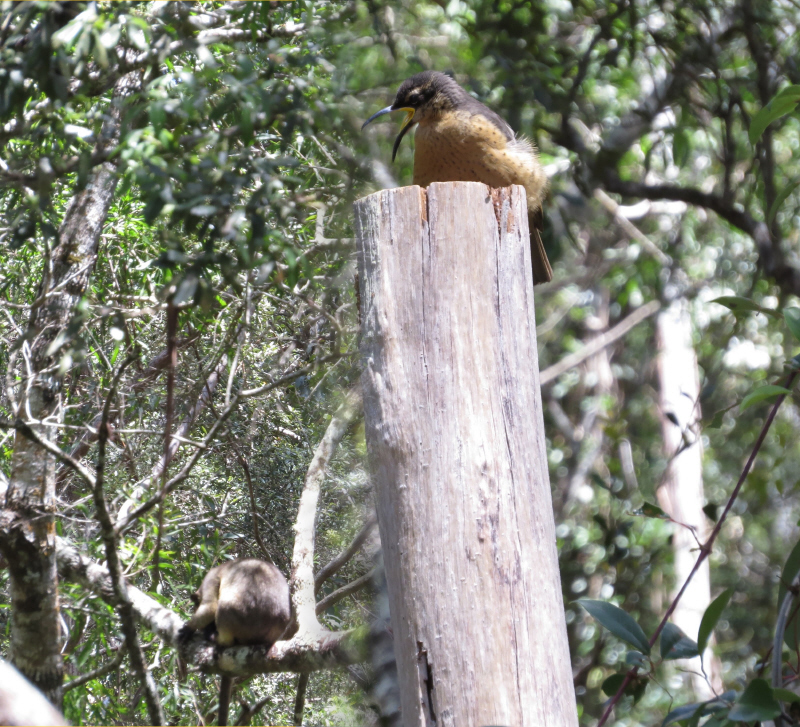
“Hey you, I am talking to you!”
Trying to get a better view from another angle: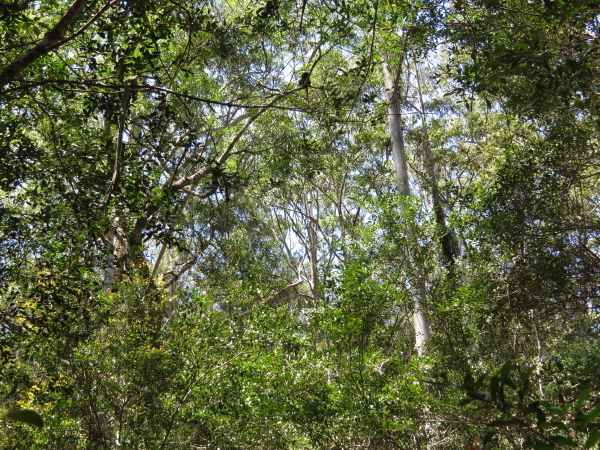
 We have seen tree-kangaroos in that tree on several occasions. This male stayed in the tree all day, taking naps between short episodes of feeding.
We have seen tree-kangaroos in that tree on several occasions. This male stayed in the tree all day, taking naps between short episodes of feeding.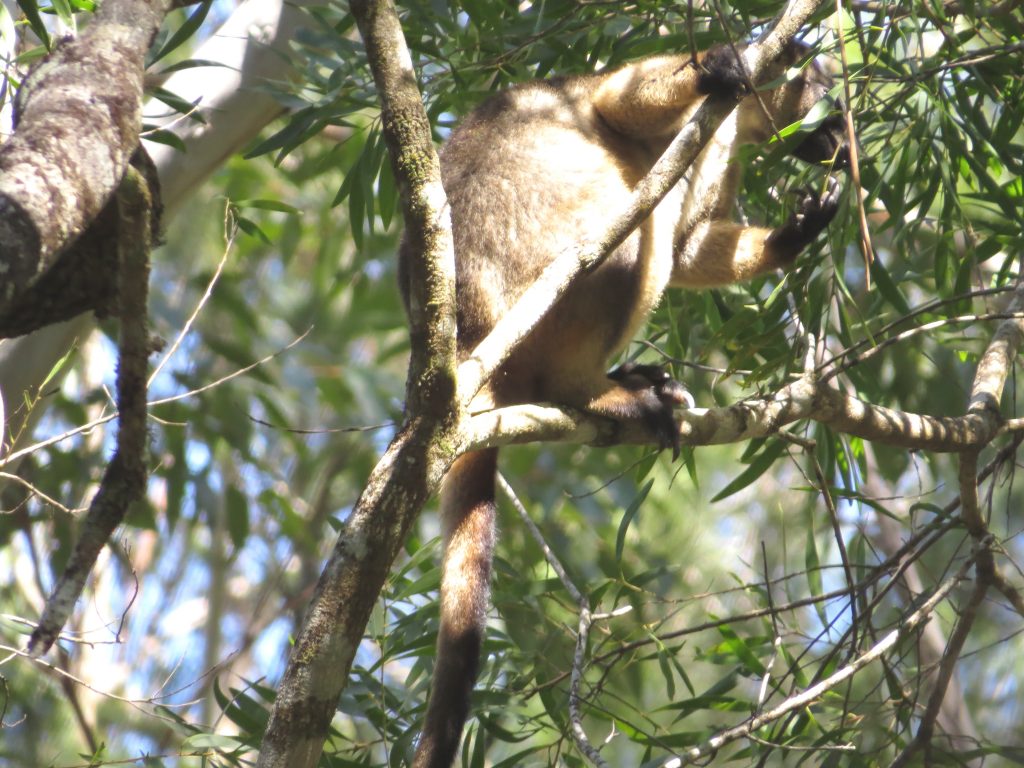
He tried several branches for a comfortable seat, but this one was has favourite:
Here you get a good view of his long claws and huge hind feet: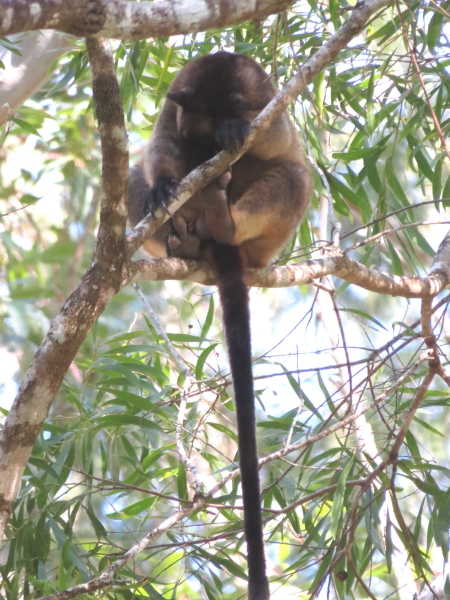
What a day! I didn’t know where to point my camera.
What’s next? Tree-roo joining riflebird on the dance pole?



